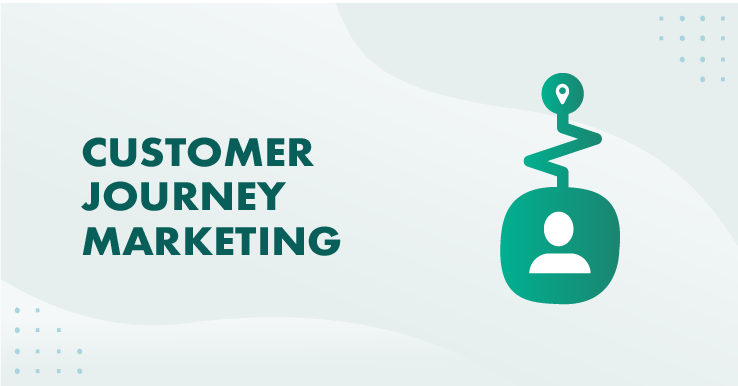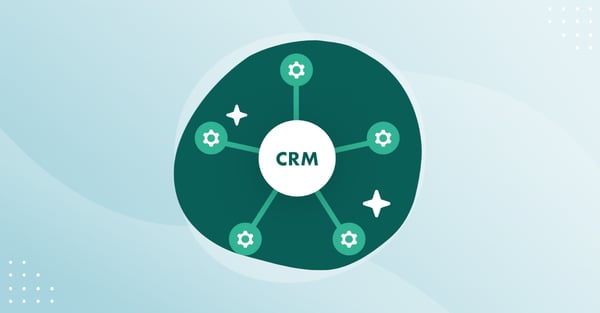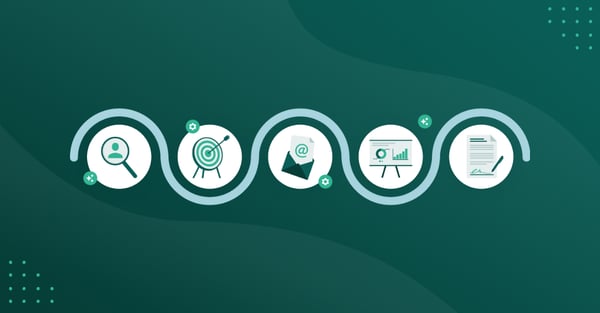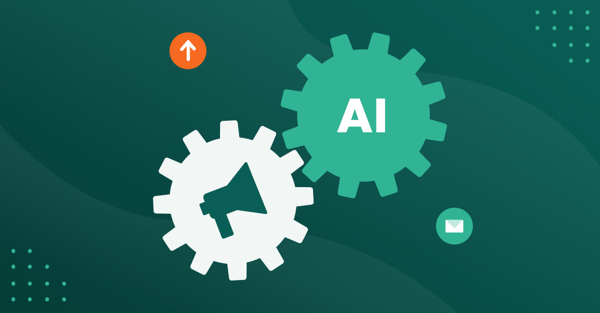If you want to grow, then it’s time to look at B2B marketing differently.
94% of businesses plan to increase their marketing spend in 2024 to navigate challenging market conditions. But, with more companies investing in marketing, attracting new customers will be tougher than ever.
The long-term solution to this isn’t buying lead lists. Or launching a one-off ad campaign.
It’s about tying all touch-points together and being consistent in how you communicate.
From first touch to purchase and all the way beyond.
How?
It starts by looking at the customer journey and how you can market to prospective and existing customers at every step.
In this article, we’ll show you why marketing across the customer journey is critical to business success. We’ll also provide a template to help you plan your customer journey marketing in 2024.
What is the customer journey?
The customer journey refers to the seven unique stages a customer goes through while doing business with your company.
Most companies believe the customer journey ends when a prospect becomes a customer.
But that’s not the case! It continues throughout your relationship – at each step.
The goal of the customer journey is to retain your customers in the long term and turn them into advocates who will promote your brand to others.
The customer journey has two distinct parts: pre-sales and post-sales.
While most marketing teams are familiar with pre-sales, i.e. getting your customers to buy from you for the first time, the post-sales aspect of the customer journey is just as important – as it helps you keep your customers and increase their spend with you over time.
Both pre-sales and post-sales parts of the customer journey include seven phases that signify the “stage” your customers are at in their relationship with your company.
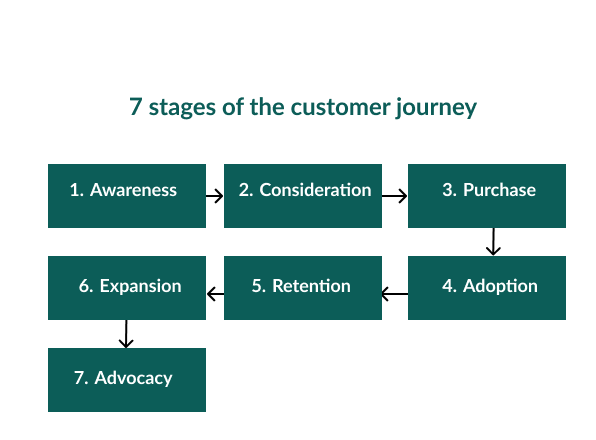
Each stage requires a different marketing approach to give your customers all the information and reassurance they need to continue their journey with you.
How to apply marketing across the customer journey
Leveraging marketing across your entire customer journey will help you to grow the value of our customer relationships over time, reduce churn, and increase brand advocacy.
To get started, let’s look at the individual stages that make up the typical B2B customer journey along with marketing tactics you can use and how a CRM solution supports the journey.
Part one: Pre-sales
The pre-sales part of the customer journey has three distinct stages that take the customer from initial awareness of your product through to making a purchase.
Companies with an effective pre-sales process can expect a 40-50% success rate when it comes to winning new business.
Therefore, it’s critical for the overall growth of your company to ensure that you optimize your marketing efforts in this part of the customer journey.
Awareness
This is the first step your potential customer will take towards recognizing your company as an option to solve their problem.
The awareness stage can take time for prospects to navigate, with 63% of consumers who seek initial information on a product not purchasing it for at least three months.
Your prospects will go through 5 stages of awareness:

- Unaware – prospects don’t yet know they have a problem to solve.
- Problem aware – they have identified a business problem to solve.
- Solution aware – they know the general solution to their problem, e.g. CRM software.
- Brand aware – they become familiar with brands who offer a potential solution.
- Most aware – they continue their research and get to know your brand well.
The awareness stage is right at the top of the funnel, so use brand and inbound marketing to capture your prospect’s interest and turn them into a lead in your CRM platform.
Examples of marketing tactics you could use during the awareness stage of the customer journey include:
- Content marketing – articles, videos, and eBooks designed to help prospects become aware of how to solve their problem and introduce your brand as a solution.
- SEO & PPC – capture the interest of prospective customers searching online for ways to solve their problems by optimizing search engine results and pay-per-click ads.
- Social media marketing – leverage the power of digital communities like LinkedIn to share helpful and relevant content with potential prospects to make them aware of your solution.
- PR – raise awareness of your brand by engaging with established media channels like TV, newspapers, magazines, and podcasts and position yourselves as an authority.
💡 You can use web forms to capture inbound leads in your CRM, which you can continue to market to in the next stage of the journey, consideration.
Consideration
Once your prospect knows about your product, they’ll want to consider it in more detail and look at how you compare with your competitors.
Prospects will look at things like:
- Pricing – can they afford to use your solution with their budget?
- Features – does your solution meet their requirements?
- Experience – are your prospects left feeling positive after each interaction?
- Online reviews – what do other people think about your solution?
- Comparison – how does your product stack up against your competitors?
There is no substitute for creating compelling content to help your prospects navigate through the consideration stage.
80% of B2B buyers prefer to gather product information through content instead of an advertisement.
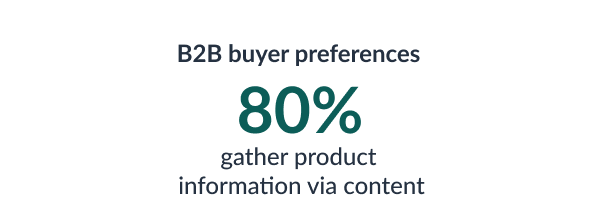
To help you align your goals with the preferences of your potential customers, you can use marketing tactics such as:
- Pricing calculators – help prospects easily understand approximate costs
- Video – showcase your feature set and associated benefits in short videos
- Personalization – use CRM segmentation options to personalize campaigns
- Email marketing – send timely and appropriate information directly from your CRM
- Competitor comparison – use charts, videos, etc. to highlight how you compare
- Retargeting ads – keep your solution front of mind for prospects at all times
By the end of the consideration stage of the customer journey, your prospect should be close to making a purchase decision and ready to move into the purchase stage.
💡 You can use a tool like SuperOffice Marketing to send personalized email campaigns to leads and help nurture them into the next phase.
Purchase
The purchase stage of the customer journey is where all your marketing efforts in the awareness and consideration phases start to pay off.
Companies using their CRM to nurture leads with high-quality marketing campaigns will produce 50% more sales-ready leads at a 33% lower cost.
Your job now is to make the purchasing experience as smooth and straightforward as possible so you can turn your sales-ready leads into customers.
B2B sales is tough. Most buyers go through 57% of the buying journey independently, but when they’re ready, they will want to speak directly with your sales team.
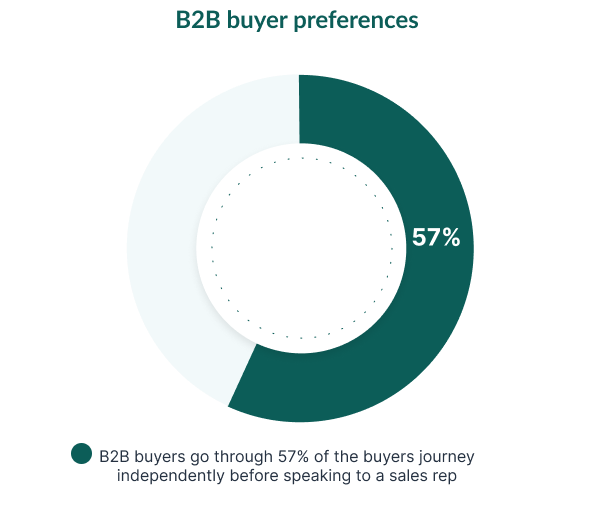
To help support the sales team with closing the sale, you can create marketing collateral, including:
- Demos & webinars – showcase your feature set with live or pre-recorded demos
- Testimonials & case studies – tell great customer stories that reassure prospects
- Customized proposals/quotes – produce compelling documents that close deals
Features like document integration mean you can easily send this marketing collateral to your prospects as they move through the sales pipeline in your CRM.
Once the sale is complete, we’re then ready to move on part two: Post-sales.
Part two: Post-sales
Adoption
After you’ve closed the sale and turned a prospect into a customer, your next job is to get them to use your product or service.
This is called the adoption stage. It helps the customer see business value from your product and embed it into their organization’s processes.
Getting adoption right is crucial – if you fail here, your customers will leave.
However, get it right, and you’ll be on the path to retaining your customer in the long term and expanding the value of their account over time.
Despite how important it is, only 29% of B2B customers feel fully engaged with their chosen vendors during the onboarding and adoption stage of the customer journey.
This presents you with an opportunity to do things better than your competitors and create a great customer experience.
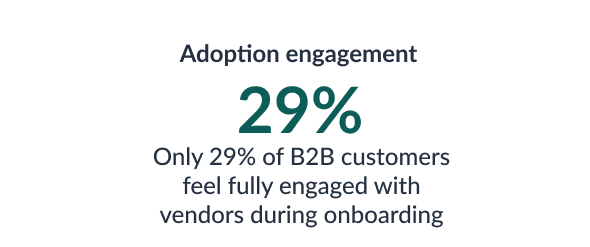
Marketing tactics you can use to help you succeed with the adoption stage of your customer journey include:
- Segmenting your audience to create personalized experiences
- Producing videos to support your users during onboarding
- Sending automated email sequences from your CRM based on user actions
- Creating documentation for the knowledge base to give users an “always on” guide
- Setting up a customer course and learning materials to embed in a customer portal
Depending on the scale and size of your customers, you may need to combine these digital marketing experiences with human-driven product onboarding and implementation services.
💡You can manage all this using a CRM platform like SuperOffice, which includes marketing capabilities and knowledge base, helpdesk, and customer portal features.
Retention
Now you have your customers up and running with your product, the retention stage helps you keep them over the long-term.
Customer churn costs US companies $168 billion a year. Despite this, only 40% of companies focus equally on customer acquisition and retention.
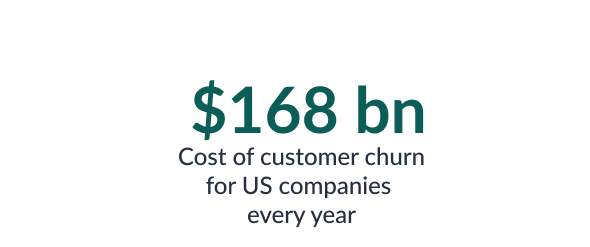
With retention, you want to focus on ensuring your customers are engaged, get value from your product and remain satisfied.
Many of the best techniques for retention involve one-to-one human interaction and are the domain of Customer Success teams.
However, there are areas where marketing can contribute towards retention too, including:
- Product update information
- Relevant thought leadership content
- On-demand support and training
- Use case insights from other customers
Combining marketing collateral with Customer Success initiatives like review meetings and proactive support will create significant ongoing value and satisfaction for your customers.
💡 You can use a CRM platform like SuperOffice to distribute your content by email and provide on-demand support and training with built-in customer service tools.
Expansion
Long-term customers are likely to spend more money with you over time.
In fact, you have a 60% to 70% chance of selling to an existing customer, as opposed to just a 5% to 20% chance of selling to a new customer.
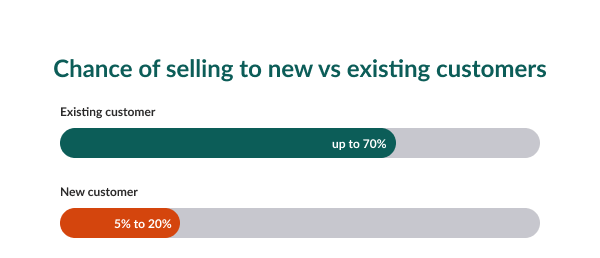
The ultimate goal of the expansion stage is to strengthen your relationship with your customer further and increase the lifetime value of their account – which boosts business growth.
This means that once your customers have gone through the retention phase and are committed and happy, you should explore ways to increase their spending.
This can be done in one of three ways:
- Expansion – a natural increase in their usage of your product, e.g. more licenses
- Upsell – the customer is so impressed with your product they want to buy an add-on
- Cross-sell – the customer is satisfied and wants to buy another of your products
Marketing tactics you can use to help you in your quest to expand the value of customer accounts include:
- Educational content – to promote new products or add-ons, show how they work
- Personalized recommendations – based on usage or behavior suggest upsells
- Free trials – offer your best customers a taste of what they’re missing out on
- Targeted marketing – send upsell email campaigns based on firmographic data
- Success stories – show how your other customers realized the full value of your product
💡You can use a sales CRM that allows your team to build expansion revenue pipelines, while marketing teams send relevant content and targeted campaigns to support their efforts.
Advocacy
The final stage of the customer journey takes all the engagement and loyalty you’ve built up so far with your customers and uses it to attract more customers.
Advancing your customers to the advocacy stage of the customer journey helps you to develop an army of satisfied customers who are happy to talk positively about your product.
Not only is this free marketing (and a great source of leads!), it also helps you close more new business deals, too.
This is because, according to Gartner, more than 75% of B2B buyers consult three or more sources of advocacy before they make a purchase decision.
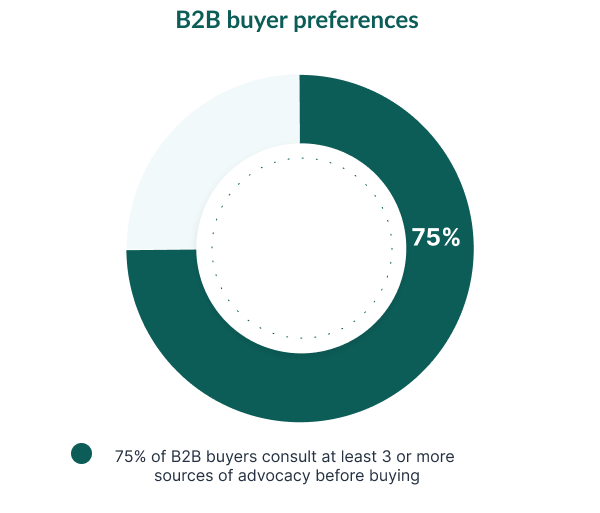
Outside of developing a specific referral program, marketing tactics you can use to help promote the idea of advocacy to your customers, include:
- Feature customer comments and insights in your content
- Interview your customers to create in-depth case studies
- Engage with advocates on social media
- Invite advocates to take part in webinars and podcasts
- Create events to bring your biggest advocates together
💡A CRM platform, like SuperOffice, can support you in this by providing a centralized source of data to identity advocates, as well as tools to engage with them.
Customer journey marketing map template
To help you think clearly about your own customer journey and the types of marketing tactics that you can use during each stage – we’ve developed a template featuring:
- All seven stages of the customer journey
- The actions your customers need to take
- What your company should be doing
- The touchpoints/channels used
- Suggested marketing tactics
- The tools you’ll need
We suggest you use the template to develop a plan of action for each persona or ideal customer profile you want to target, rather than trying to create a “one size fits all”.
Customize the template for your own needs and adapt it accordingly.
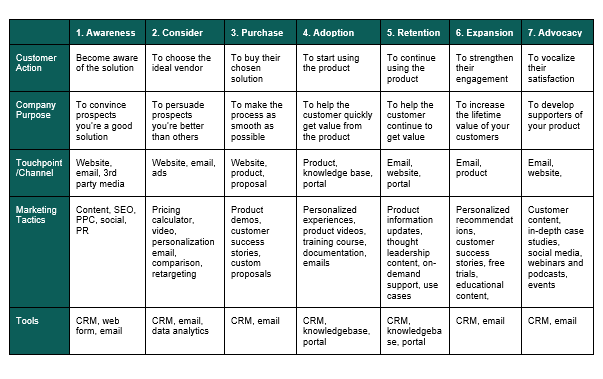
As we outline in the next section, the impact of ignoring customer journey marketing could be catastrophic for your business.
The impact of ignoring customer journey marketing
B2B companies are aware that they should use marketing to strengthen customer relationships across the entire customer journey.
However, the companies that are aware, but don’t take action, run the risk of experiencing high-impact issues like:
- High customer churn – losing your customers has a direct impact on revenue
- Unstable revenue – non-stop chasing of new customers to fill gaps left by churn
- Negative sentiment – customers who leave will tell others and damage your brand
- Low profitability – high acquisition costs and high churn mean low profitability
- Poor growth – missed opportunities for growth through expansion revenue
- Lack of referrals – without long-term happy customers, you won’t get referrals
So, it’s clear what the negative impact will be on your business if you don’t market across the entire customer journey.
How SuperOffice CRM supports the customer journey
At SuperOffice, we believe that relationships and productivity are two of the most important things in business.
So much so that we built a CRM platform to help businesses everywhere work smarter and turn their relationships into revenue.
With SuperOffice, you can manage relationships and communicate directly with prospects and customers across the entire customer journey, using features like:
- Custom web forms to capture leads at the start of the customer journey
- Email marketing features to contact customers directly at any time
- Automation capabilities to help you create seamless experiences
- Data analytics to help you segment and personalize your marketing
- One central platform that connects sales, marketing and customer service teams.
